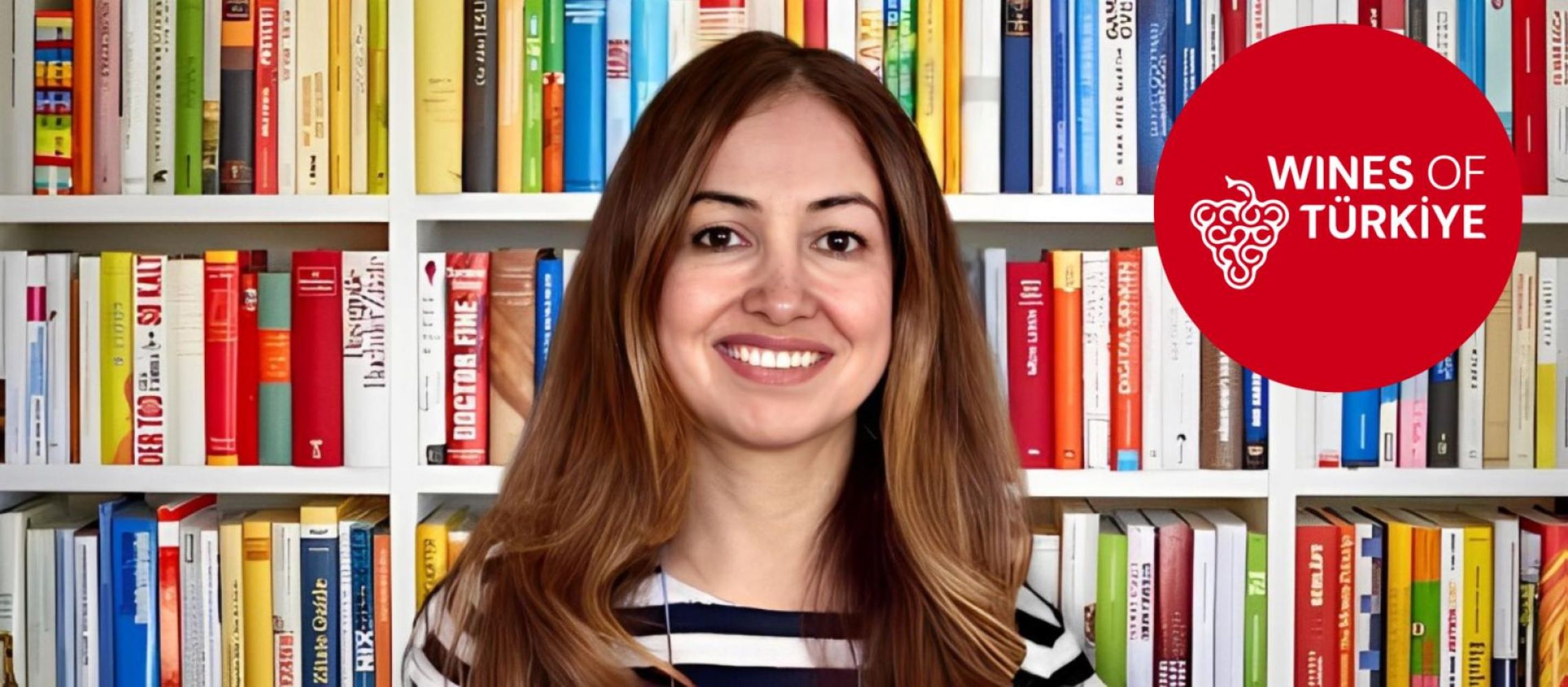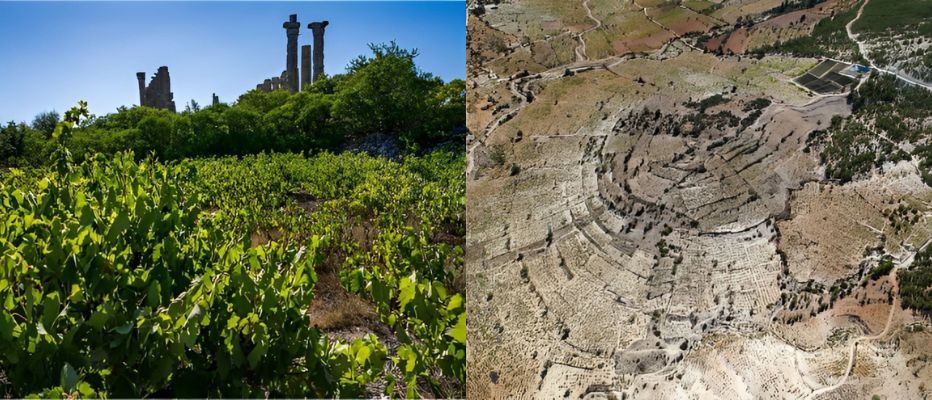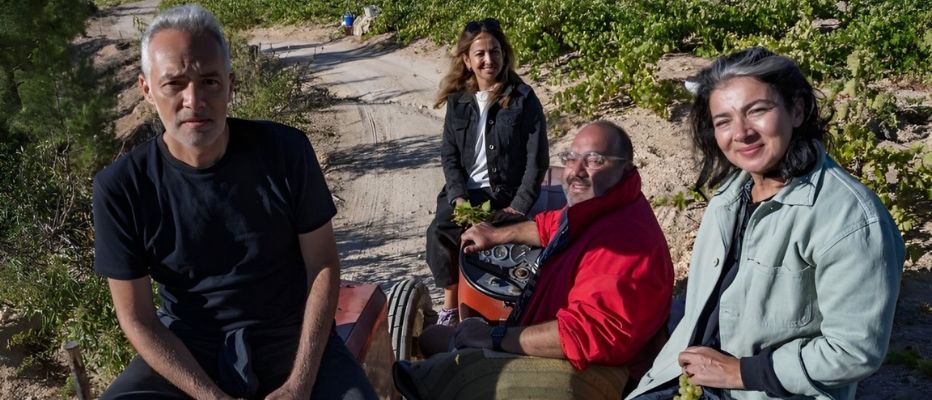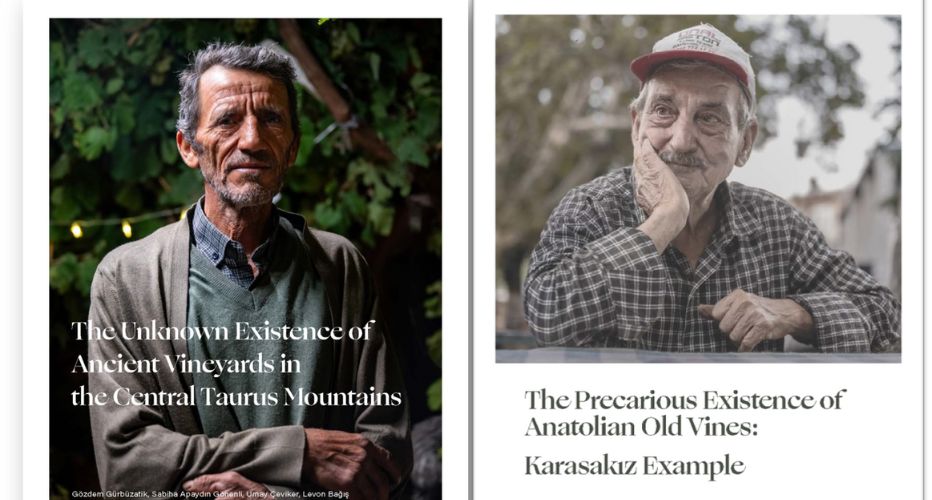Early Bird Deadline
30 November 2025
Judging
Date
23 & 24 March 2026
Winners Announcement
22 April 2026
30 November 2025
23 & 24 March 2026
22 April 2026

Turkey's wine industry is experiencing a remarkable renaissance, blending ancient traditions with modern innovations. Home to a diverse range of native grape varieties, Turkey’s viticultural landscape is as rich and varied as its history. In this interview, Gözdem Gürbüzatik, a passionate advocate for Turkish wines, discusses the country's wine heritage journey, the challenges faced, and the innovative projects aimed at preserving and promoting Turkey’s unique grapes. From the Anatolian Grapes Project to the broader efforts of Wines of Turkey, Gözdem shares her insights into the past, present, and future of Turkish winemaking.
Turkey’s geography lies around the birthplace of grape domestication and winemaking. Vineyards are like a web of cultural continuity. You will find all around the massive land of old vineyards, from an altitude of sea level up to 1770m high. It is an incredible biodiversity and the tradition of grapes and vines has always been culturally intertwined no matter what the political dominance is. From the Hittites to the Romans and Byzantines then the Ottomans the viticulture was always there.
In order to understand why we are now experiencing a sort of new renaissance of winemaking biodiversity here is a brief historical background:
Vinification and winemaking had an interruption at the beginning of the 20th century due to complicated layers of changes and turmoil. Population exchange, change of governance, phylloxera, and wars created a loss of cultural memory of this tradition. However, the initiation of state monopoly up until the 2000s brought wine production as an economic development project back to the land. Starting with 2004, after privatization we saw an increasing interest in winemaking. There are currently around 200 wineries in Turkey. During the state monopoly period, the government started projects to collect the inventory of vines and grapes throughout Turkey. To protect them, they created a collection vineyard in Tekirdağ, Thrace. There are 1439 grape varieties registered here and 1150 varieties for which genetic studies have been carried out. 854 of them were found to be genetically different. This indicates a very high diversity on a world scale. It is important to keep records, but knowing the potential of these grapes, their genetic ties with each other, and their connections with grapes around the world is a major research topic.
Vinification of indigenous grapes was not more than 10 varieties up until 10 years ago. Most of the grapes that were used were blended and used as no-names. Nowadays, there is a great interest from new wineries to go around their local terroir and find out these unique grape varieties most of the time ungrafted or old vines at unique terroirs.
Currently, 68 indigenous grape varieties have been uniquely vinified and it is a great richness and interest for not only Turkish wine enthusiasts but the international wine community as well. There are projects to raise awareness for these micro-terroirs that need to be protected. For instance, Heritage Vines of Turkey is working on micro-terroir and unique old vineyard sites to raise awareness. I take part in this initiative with 3 other friends; Umay Çeviker, Levon Bağış, and Sabiha Apaydın Gönenli.

Image: (Left) Archeological Site and active old ungrafted vineyards at the heights of Mersin city on Taurus Mountains and (Right) The terraced vineyards in the Coma location of Karacaoglan village are shaped like an amphitheater.
Under the title “Precarious Existence of Anatolia’s Old Vineyards,” we presented our work with the support of The Old Vine Conference and The IWSC, mapping the inventory of Karasakız vineyards in Çanakkale Bayramiç and inviting wine producers to the region to draw attention to this grape. Additionally, we had the opportunity to present our micro terroir inventory study of old vineyards in the villages of Çömelek-Karacaoğlan-Uzuncaburç in the Toros Mountains, supported by Slow Wine and the Hans Wilsdorf Foundation, to a broader audience. Genomic Identity and Database Comparisons of Our Local Grapes. In another session moderated by Umay Çeviker, Ankara University Faculty of Agriculture Department of Horticulture Faculty Member Viniculturist Assoc. Prof. Dr. Hande Tahmaz Karaman announced that with the initiative of “Heritage Vines of Türkiye” and in collaboration with Montpellier Grapevine Biological Resources Center (BRC), we are preparing to launch a comprehensive study aimed at investigating the genomic identity of Turkey’s ancient vines and local grape varieties.
The main focus of the initiative is the comparative analysis of the DNA profiles of 68 local grape varieties. Thus, we aim to map the worldwide distribution of these varieties. While the genomic inventory connectivity is recorded through scientific study, DNA profiling of the 68 grape varieties currently used in wine production in Türkiye will be conducted, revealing the potential to produce unique wines that reflect terroir characteristics.
Another aspect of the project will provide insights into the conservation of biological diversity, climate change resilience, and the historical development of viticulture.

Image: “Heritage Vines of Turkey” Founding Team; Levon Bağış (in the driving seat), Umay Çeviker (Sitting back on the left), Sabiha Apaydin (Sitting back on the right), Gözdem Gürbüzatik (Sitting in the front of the Tractor).
Indeed, we have 7 main regions which are completely different from each other. There are Mediterranean and continental climate zones but even in the Mediterranean zones, we have amazing plateaus that create unique terroirs that enable the day/night temperature differences with full sunshine. In continental climate areas, in Central Anatolia, we have the unique volcanic region of Cappadocia. This area is completely phylloxera-free and both the minerality of the soil, the dry weather, and the ideal circadian temperature conditions are reflected in the grapes. When you go up to the high altitude of Eastern Anatolia, you find very hot weather but nice fresh dry air at night. This area is great for strong vibrant reds mostly. South Eastern Anatolia, is probably the hottest of the regions but full of unique grape varieties. Several Christian communities are carrying over the tradition of winemaking uninterrupted in their church and houses. You will find very old centennial vineyards and white grapes have almost tannic structures due to their resistance to heat and climatic conditions. On the Aegean sides, there are arboreal vineyards and vibrant red varieties that are so fruity that you can chill in summer and drink it with the breeze.
Only 3% of Turkey’s vineyards are dedicated to winemaking. This figure of 15% may represent the potential of vinification. There are concentrated regions of winemaking mostly in Aeagan-Denizli İzmir and Manisa area, Central Anatolia around Ankara and Cappadocia region, in Thrace Tekirdağ and Kırklareli are the main areas. If you go to eastern Anatolia you will see the concentration of vineyards around Elazığ and Diyarbakır and in Southeastern Anatolia it is around Mardin, Şırnak, and Kilis.
However, it is all around Turkey and winemaking grapes can be found all around even in Black Sea regions.
I have answered this partially in the first question. Turkey although an old land for winemaking tradition and culture in terms of ethnography, anthropology, and Arche botany, our new generation of winemaking tradition is very new. Because of the Greeks and Armenian people, the Ottoman period was full of winemaking tradition and we lost that memory. So the new tradition came with European scientific learning methodologies. This brought many new international grape varieties into the land and wine culture started to be appreciated with these varieties. We do not have any appellation or protected areas and our unique grapes were not seen as valuable up until very recently. The interaction with land and terroir helps winemakers and viticulturists to understand the land and geography potential. This takes time. You need to spend time with land over and over again. So the viticulture and winemaking tradition is a fairly new world we may say.

Image: Micro terroir mapping and call for action projects from heritage vines of Turkey initiative
These two grapes are originally from Eastern Anatolia, Elazığ /old Harpout is the land for Okuzgozu and Diyarbakır is the land for Boğazkere. However, for the last 20 years, people started to carry these grape varieties to the Aegean region and they have particularly landed there with a completely different characteristic. These two grapes complement each other and are used as a blend most of the time. Öküzgözü is very black, fruit-oriented as well as with a deep acidity, with relatively smoother tannins. Boğazkere however, as the name implies in Turkish, is throat-scratcher and very tannic, with more red fruits like cherry and dried fruits like fig or sometimes mint, eucalyptus notes. It is difficult to compare these two grapes and their blend to something outside Turkey. I believe the terroir and gastronomical traditions complement each other. Here you find lamb that is slow-cooked with spices. You find amazing aubergine and peppers for instance, therefore, this wine is very well balanced with kebabs and slow-cooked meats.
There are paradoxical issues regarding this initiative. Many country trade programs support global trade and export market initiatives. In Turkey, export support coming from the government is very limited and it is very slow. Wine producers have to support their own budget and create programs by themselves to focus on export markets. As the domestic market is also heavily regulated, most of the time it is very demotivating to work on bureaucratical paperwork. What happens is that although wine producers see that the export market can be a real potential for the future, they do not have enough focus or financial backup to continue investing in a generic country brand. That is why for the last couple of years we have seen a volatile existence of the Wines of Turkey brand outside Turkey.
I also think that the overall image of the country does not reflect the potential of winemaking at the moment and this has to be told and seen by the international press we need to make ourselves more transparent in that aspect to show our potential and unique terroirs. It is in fact the human heritage and we should look at this without boundaries.
This had a main impact on written documentation, academic research, and the visibility of wine producers both in the domestic and tourist markets. There are no websites and you cannot promote or market wine-tasting to wine enthusiasts directly. It is very difficult to get connected with the overall ecosystem of people within the winemaking market in Turkey. However, winemakers are promoting vineyards and they created vineyard routes and restaurants or small boutique hotels in their vineyards and are promoting grapes instead of wines. This is a good example of the creativity of wineries. However, still, academic and written documentation and connectedness are the main issues for growth potential.
There are certain groups communities and associations who have recently tried to overcome this issue by creating a vineyard and old vine-related conference.
Initiated in 2019, the third iteration of the “Root Origin Soil“ Conference, focusing on the preservation of Anatolia’s grape and vineyard heritage, was completed on June 9, 2024. Our goal was to bring together academics, writers, wine producers, and consumers who work towards this cause but do not interact much with each other, and to encourage them to collaborate.

Image: (L-R) Gözdem Gürbüzatik and Sabiha Apaydin at "Root Origin Soil“ Conference
Consequently, the conference community, composed of approximately 300 participants, became an incredibly passionate group of these individuals. After the first section, which featured many valuable speakers and sessions, the second half opened with a keynote speech by wine professional and writer Jancis Robinson, who returned to Turkey after 15 years.
I believe that we are very close to the tipping point. We should use the current social media and speed of learning and interacting to our advantage. Yet we are still learning our own soil and terroir. Although we make good, interesting, and high-quality wines, for unique varieties to establish their characteristics it takes time and it is necessary for us to work collaboratively and support each other. We need to create and work on our own ecosystem and although there are many obstacles, financial ones being the main ones, we still work on growth and at a good pace. The Wines of Turkey umbrella brand can enable these advancements and work as a web of connecting both the advancement of Turkey’s inland works and visibility and transparency globally.
[[relatedPurchasesItems-38]]
As Turkey's wine industry continues to evolve, the dedication and vision of growers play a crucial role in uncovering and promoting the country's unique viticultural heritage. Through projects like the Anatolian Grapes Project and the broader Wines of Turkey initiative, the rich tapestry of Turkey’s indigenous grapes and winemaking traditions is being preserved and celebrated and slowly gaining ground on the global stage. This renaissance not only honors Turkey's historical roots but also paves the way for a vibrant and innovative future in winemaking.
In conversation with Malvika Patel, Editor and VP, Beverage Trade Network
Show your wines where it matters. Get your products tasted by top sommeliers, buyers and experts at the London Competitions — enter now.